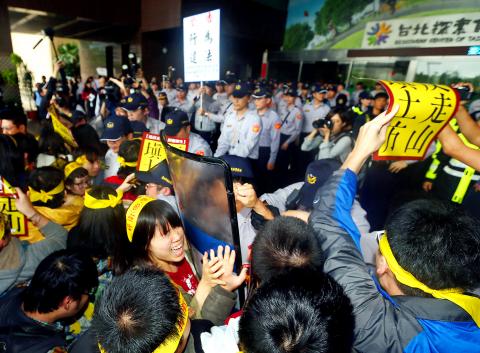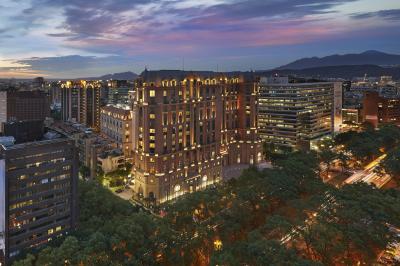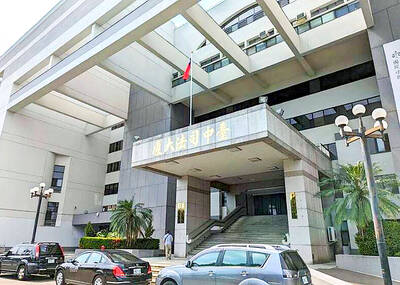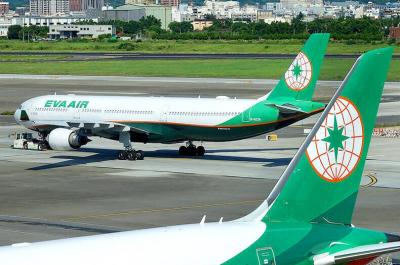Supporters of the Losheng (Happy Life) Sanatorium yesterday clashed with police, who blocked their attempt to enter Taipei City Hall after city officials refused to meet them and accept a petition calling for a halt to the construction of an MRT maintenance depot.
On Thursday the activists marched for 17km from the sanatorium to city hall and camped outside overnight to press their demands.
“Step out to take the responsibility, [Taipei Mayor] Hau Lung-bin” (郝龍斌), the angry crowd shouted as they pushed forward, trying to go into the city hall, but were pushed back by police officers holding shields.

Photo: CNA
“You have violated the Assembly and Parade Act (集會遊行法). Please back down and leave,” the police said through a loudspeaker.
No one listened, and the pushing and shoving continued, until police began dragging and arresting some of the demonstrators.
Other protesters reacted by trying to pull their companions back and yelling at the officers.

Photo: CNA
The conflict broke out just after 9am when about 100 protesters — mobilized by the Youth Alliance for Losheng and the Losheng Self-Help Organization — said they wanted to deliver a petition asking the city government to suspend the construction of an MRT maintenance depot on the site where the sanatorium is located in New Taipei City’s Sinjhuang District (新莊).
They said the construction has caused another landslide at the site recently.
City officials declined to come out and meet them.
“[The city government] has forcibly evicted Losheng residents and sacrificed the interests of the socially disadvantaged [for the MRT construction],” alliance member Lin Hsiu-peng (林秀芃) said.
“It neither cares for the lives of these people, nor the sanatorium, which is an important cultural asset,” Lin said.
With no official response forthcoming, the alliance vowed to take further action.
“As the city government has disturbed the lives of Losheng residents, we will also try to disrupt the MRT system,” Lin said.
“We would like to apologize to passengers who may be effected by our actions, but I hope that, rather than complaining, you would take some time to learn about this serious problem that has been around for 10 years,” Lin said.
Completed in the 1930s, the sanatorium was home to thousands of people with Hansen’s disease, also known as leprosy, who were kept there by force, first by the Japanese colonial government and then the Chinese Nationalist Party (KMT) regime, as the disease was thought to be highly contagious and incurable.
More than a decade ago, the government said that the sanatorium would be razed to make way for an MRT maintenance depot, triggering an opposition campaign that has compelled the government to agree to preserve a portion of the site.
However, as preservationists have long said, the construction has led to several landslides, causing several construction suspensions.
Recently, landslides have recurred, damaging some of the remaining buildings and leading the city’s Department of Rapid Transit Systems to ask the remaining residents to evacuate.

The first global hotel Keys Selection by the Michelin Guide includes four hotels in Taiwan, Michelin announced yesterday. All four received the “Michelin One Key,” indicating guests are to experience a “very special stay” at any of the locations as the establishments are “a true gem with personality. Service always goes the extra mile, and the hotel provides much more than others in its price range.” Of the four hotels, three are located in Taipei and one in Taichung. In Taipei, the One Key accolades were awarded to the Capella Taipei, Kimpton Da An Taipei and Mandarin Oriental Taipei. Capella Taipei was described by

The Taichung District Court yesterday confirmed its final ruling that the marriage between teenage heir Lai (賴) and a man surnamed Hsia (夏) was legally invalid, preventing Hsia from inheriting Lai’s NT$500 million (US$16.37 million) estate. The court confirmed that Hsia chose not to appeal the civil judgement after the court handed down its ruling in June, making the decision final. In the June ruling, the court said that Lai, 18, and Hsia, 26, showed “no mutual admiration before the marriage” and that their interactions were “distant and unfamiliar.” The judge concluded that the couple lacked the “true intention of

EVA Airways today confirmed the death of a flight attendant on Saturday upon their return to Taiwan and said an internal investigation has been launched, as criticism mounted over a social media post accusing the airline of failing to offer sufficient employee protections. According to the post, the flight attendant complained of feeling sick on board a flight, but was unable to take sick leave or access medical care. The crew member allegedly did not receive assistance from the chief purser, who failed to heed their requests for medical attention or call an ambulance once the flight landed, the post said. As sick

INDUSTRY: Beijing’s latest export measures go beyond targeting the US and would likely affect any country that uses Chinese rare earths or related tech, an academic said Taiwanese industries could face significant disruption from China’s newly tightened export controls on rare earth elements, as much of Taiwan’s supply indirectly depends on Chinese materials processed in Japan, a local expert said yesterday. Kristy Hsu (徐遵慈), director of the Taiwan ASEAN Studies Center at the Chung-Hua Institution for Economic Research, said that China’s latest export measures go far beyond targeting the US and would likely affect any country that uses Chinese rare earths or related technologies. With Japan and Southeast Asian countries among those expected to be hit, Taiwan could feel the impact through its reliance on Japanese-made semi-finished products and